Dragon's Dogma on Switch: the port's solid but the cutbacks are noticeable
A last-gen/current-gen remaster hybrid?
Spearheaded by Devil May Cry director Hideaki Itsuno, Dragon's Dogma is often overlooked in the list of last-gen's best RPGs. Inspired by western goliaths like Skyrim, Capcom challenged itself to create its own fantasy epic, powered by its own proprietary technology. PC and current-gen console ports followed, culminating in the arrival of this fascinating Switch conversion.
Developed over the course of three years, Dragon's Dogma runs on MT Framework - common to most of Capcom's last-gen titles. Using the limited resources of PS3 and Xbox 360 at the time, the team made a rare push for a fully open world design. Ultimately though, while the mechanics hang together well enough, the frame-rate struggled on those machines. Pop-in was an issue and texture quality wasn't the best, possibly limited by the 512MB of RAM common to both last-gen PlayStation and Xbox platforms.
The good news is that the Switch version has more in common with the current-gen remasters than it does with the original release. Docking the machine with a TV shows a marked upgrade in several respects. The last-gen highlights remain - crepuscular rays and dynamic shadows looked good then and they still do now. Light flits beautifully between trees, cast from grey skies blanketing the game's opening scenes. Meanwhile, character shadows are a real feature of undergrounds dungeons and night battles - torchlight creates sharp, directional shadows, much in the same way Dark Souls 2's characters cast silhouettes on around bonfires. It gives light a great sense of impact to these scenes, where lanterns are often crucial to making progress.
Upgrades are present on top of a robust last-gen foundation. Native resolution is pushed higher on Switch to 1600x900 while docked. At 900p it's a more than passable experience that works on modern 1080p TVs and it retains a similar post anti-aliasing setup to the original game. That's a big upgrade on the 1280x608 image on PlayStation 3, for example. Switch also retains the true 16:9 aspect ratio of the remasters, as opposed to the letterboxed 'filmic' 2.35:1 presentation of the launch code. It's a full-on improvement, although inevitably it falls short of the PS4 version's full 1080p image.
In terms of Switch's visual feature set, Dragon's Dogma sits somewhere between the PS3 and PS4 releases, but overall, there's more commonality with the modern remasters. For example, the higher resolution textures found in the PS4 and PC versions make their way over to the Nintendo console. These assets aren't exactly showcase material for any platform, but it's a relief to see Capcom taking advantage of the Switch's available 3.5GB of memory for developers to deliver a decent upgrade over the last-gen versions.
Indeed, in most respects, Switch compares favourably with the PS4 release. Texture filtering quality takes a hit on Switch as is the case with most ports, but the bulk of play reveals an exact match in the open world, interiors, and up-close on characters. The more obvious difference is in shadows. Switch misses the sharp, clear outlines available on PS4, but it's still a clear upgrade over the blurrier shade outlines of the last-gen machines. Similar to the choice in rendering resolution, it finds a middle-ground that suits the hardware spec nicely - though some flickering does remain.
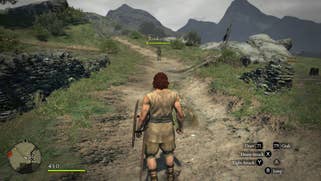



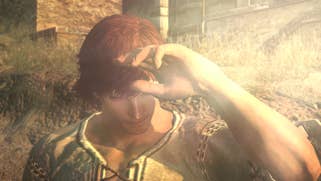


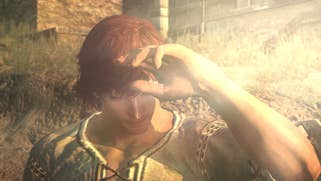
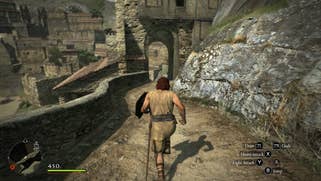
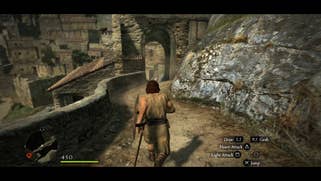


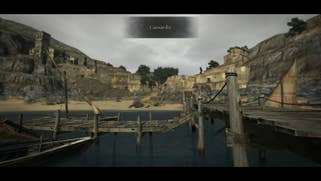

There is a smattering of other minor changes - ambient occlusion shade being one of them. PS4's implementation is more refined, and less thick than Switch's. However, the bigger issue is world detail itself. Up close, both versions load the same assets in at likewise quality, but PS4's draw distances for foliage, objects and NPC's are much further afield. Switch uses a setting much closer to last-gen consoles and it must be said, it stands out at the higher 900p native res it pushes. The result is that you'll see much more pop-in than you're used to by today's standards. Almost every area, barring dungeons, has pieces of the world pop into view noticeably. It's a bit of a shame. In a similar vein, Dragon's Dogma is a little rough around the edges in terms of glitches; more than once I've caught NPCs jittering on the spot, or in the corner, just as they did on release seven years ago.
Dragon's Dogma has some issues in fidelity on a living room display, then, but it's more flattering when played in handheld form, with Switch's six-inch display making many of the game's rough points less noticeable. Side-by-side with docked play, the only real cutback is in resolution, with the handheld rendering out at a native 1024x576. That's 56 per cent of the pixels pushed of the screen's maximum 720p, so there is a real saving on GPU bandwidth there - in fact, Dragon's Dogma is handheld mode renders just 41 per cent of the docked mode's 900p output.
In terms of performance, most of Capcom's choices here are geared to getting Switch running at 30fps locked - just like PS4. Docked under a TV that's precisely what we got most of the time, and the comparison against PS3 really shows just how far we've come. The resolution is higher, textures are sharper, shadows are improved, but frame-rates soar far over PS3's wavering 20-30fps range. Back in the day, the last-gen builds could even dip into the teens when pushed, but not so on Switch. The bottom line is, for all the limits this version has in draw distances, the saving grace is that it runs well most of the time.
That's not to say it's perfect by any means. There are some frame-pacing issues, a problem even the PS3 had when it could reach the 30fps frame-rate target. And that's not to say Switch is untouchable in hitting 30fps either; the initial dragon battle shows heavy alpha can still tank the console's performance down to near 20fps. This moment is the worst spot I've encountered so far, thankfully, but there is potential for similar results later on.
Clearly though, Switch is the smoother way to play the game. That being said, PS4 still shows how much better it could be, running at 1080p with a near-faultless 30fps. The frame-pacing issue is still there, and some stutters interrupt play, but it clears up the drops Switch has with its TV playback. The ace in the hand for Switch is the portable play, though sadly, this is where the package falls a little short and frame-rates just aren't as strong as you might expect.
The cutback in resolution is huge as a handheld experience, but it's still not enough to offset the drop in GPU power while running from battery. Performance is markedly improved over PlayStation 3, but I've seen enough drops in regular play to say that mid-20s frame-rates will seep into the experience, more-so than docked. The plus side? Well, these drops are less noticeable when played on Switch's smaller screen - but it's a shame that more couldn't be done to mitigate the issue, especially with such aggressive cuts in resolution.
Dragon's Dogma is an interesting port for Nintendo's hybrid console. For one, it's remarkable how much of the PS4 release carries over, even if it is a game with inherent limit, where draw distances are very much of last-gen standard. Capcom's experiment in open-world design paid off, but there is a sense that Switch is capable of delivering more with more focused tailoring to the hardware. Nevertheless, Dragon's Dogma is a solid RPG with a decent technical backbone, and there's plenty of content to sink your teeth into. Just be prepared to feel the ripple effect of Capcom's efforts to work around last-gen limits as you play, even today.



